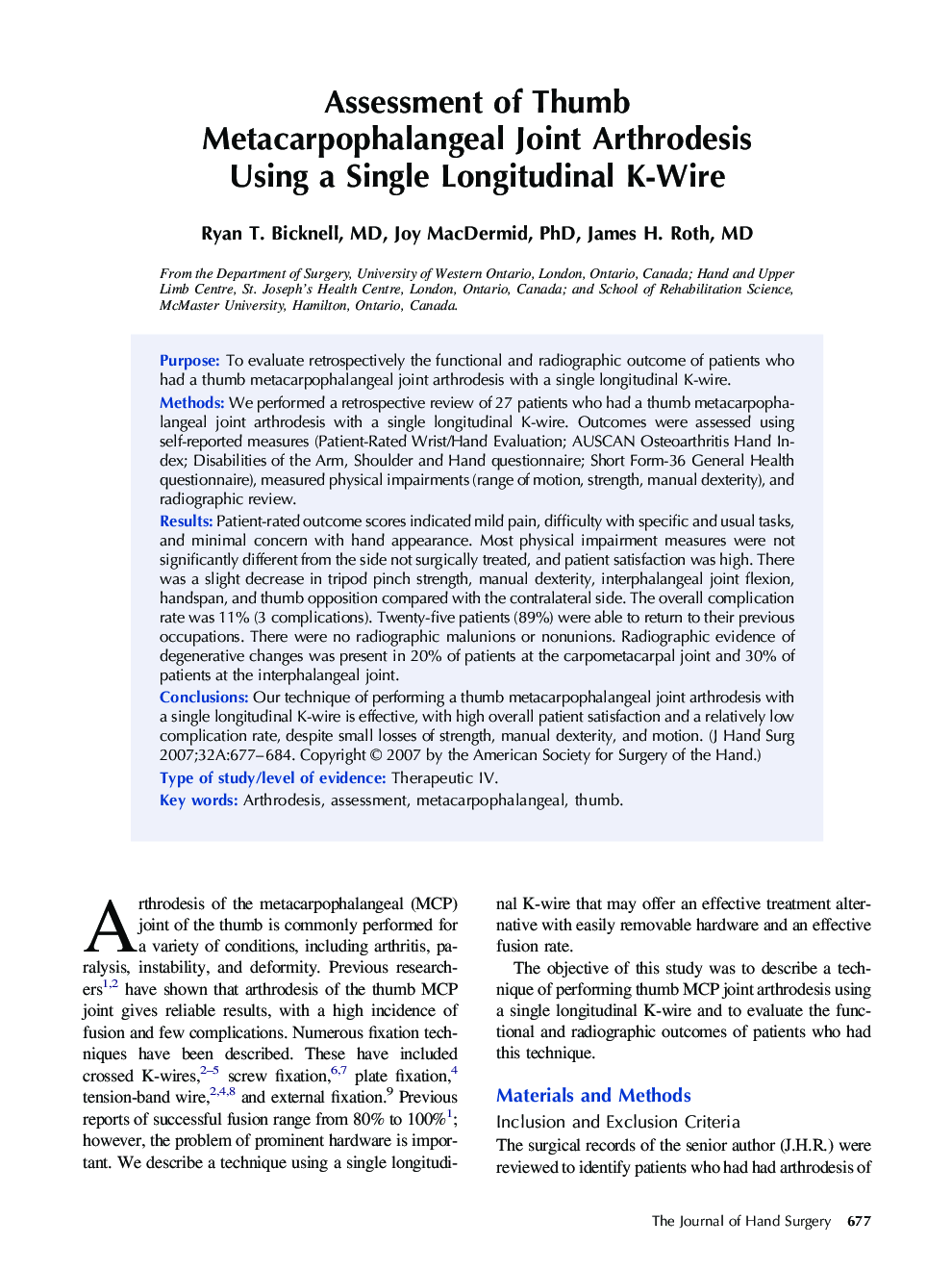| Article ID | Journal | Published Year | Pages | File Type |
|---|---|---|---|---|
| 4070283 | The Journal of Hand Surgery | 2007 | 8 Pages |
PurposeTo evaluate retrospectively the functional and radiographic outcome of patients who had a thumb metacarpophalangeal joint arthrodesis with a single longitudinal K-wire.MethodsWe performed a retrospective review of 27 patients who had a thumb metacarpophalangeal joint arthrodesis with a single longitudinal K-wire. Outcomes were assessed using self-reported measures (Patient-Rated Wrist/Hand Evaluation; AUSCAN Osteoarthritis Hand Index; Disabilities of the Arm, Shoulder and Hand questionnaire; Short Form-36 General Health questionnaire), measured physical impairments (range of motion, strength, manual dexterity), and radiographic review.ResultsPatient-rated outcome scores indicated mild pain, difficulty with specific and usual tasks, and minimal concern with hand appearance. Most physical impairment measures were not significantly different from the side not surgically treated, and patient satisfaction was high. There was a slight decrease in tripod pinch strength, manual dexterity, interphalangeal joint flexion, handspan, and thumb opposition compared with the contralateral side. The overall complication rate was 11% (3 complications). Twenty-five patients (89%) were able to return to their previous occupations. There were no radiographic malunions or nonunions. Radiographic evidence of degenerative changes was present in 20% of patients at the carpometacarpal joint and 30% of patients at the interphalangeal joint.ConclusionsOur technique of performing a thumb metacarpophalangeal joint arthrodesis with a single longitudinal K-wire is effective, with high overall patient satisfaction and a relatively low complication rate, despite small losses of strength, manual dexterity, and motion.Type of study/level of evidenceTherapeutic IV.
